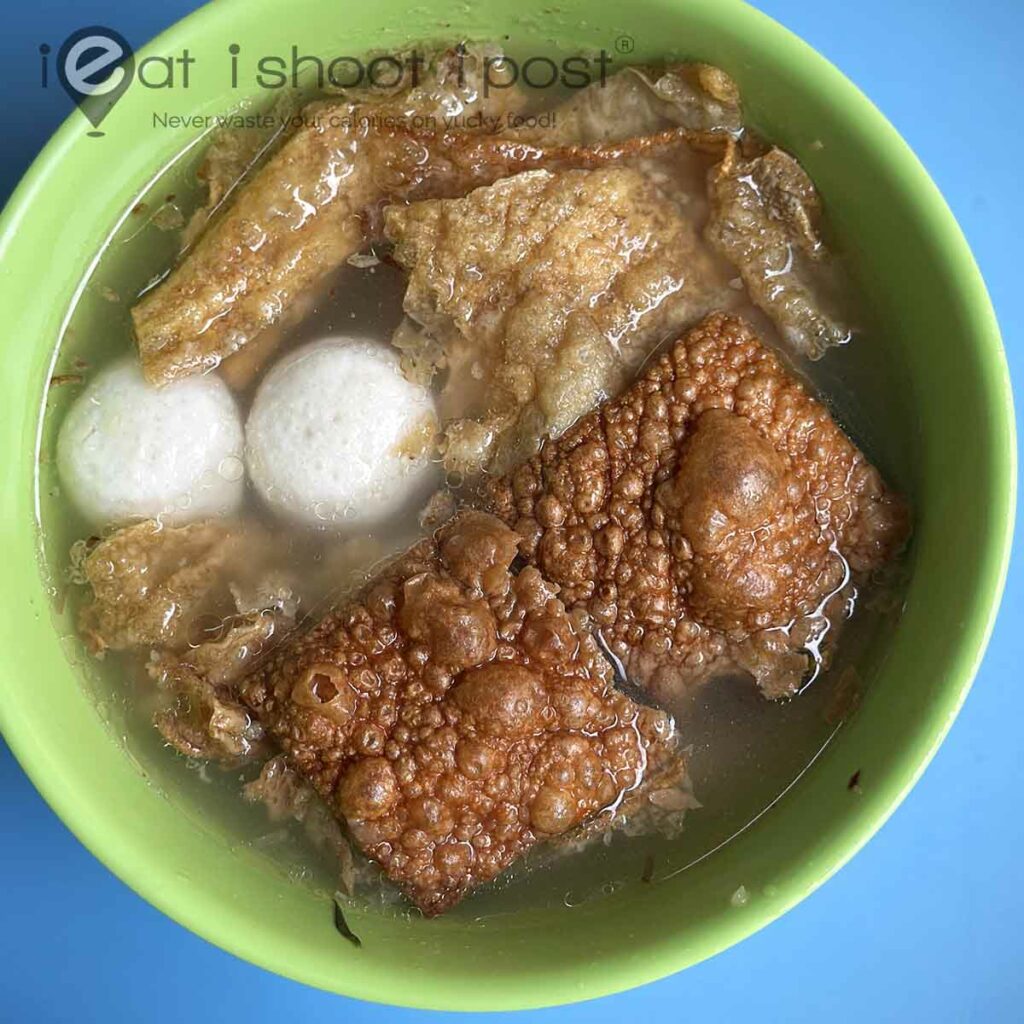
One of my fondest food memories as a kid is a particular Pau that my dad used to buy from Toa Payoh Lor 5. It was from a little pau stall run by an elderly Hainanese couple. My dad always called it “Hainang” sic pau. I am not sure if the stall actually had a name, but to me it has always been known as Hainang pau.
The Hainang pau was very different from any other pau. It was simply an old Hainanese couple’s recipe made with a yeasty, toothy dough that most of us would be able to do at home and filled with small cubes of roasted pork, turnips and onions. It was like a cross between a char siew pau and a bak pau, in the sense that the meat was cut like a char siew pau, but the seasoning was that of a bak pau. What ever it was, the pau was absolutely delicious and its something I wish was still around.
I have tried to make pau at home and the skin always turned out like that of the Hainang pau. I have tried to the more popular local style pau with the soft silky skin, but my pau skin always turns out to be more toothsome than silky. My friends at Prima flour mills tell me that they actually make a commercial grade of flour for Pau makers in Singapore which is not available in the supermarket shelves. This highly bleached flour is nice and white and gives the pau its familiar soft spongy texture.

But of late, I have had a paradigm shift. This came about when I was around Circuit Road food centre and stumbled on this very unassuming little Pau stall selling a very rustic looking Pau. In fact, I think that the first thing that attracted me to the stall was a plate of oddly shaped Siew Mai on an enamel plate. I am always attracted to these type of nostalgic, old stalls, so I bought a few to try.
When I first bit into the Pau, my first reaction was that it was very similar to what I had made at home. But there was something in the thick, uneven, yeasty dough that sort of grows on you as you chew on it.

The moment of epiphany was when I bit into the Tau Sar Pau. The grainy Tau Sar wasn’t overly sweet and had a wonderful umami about it that I have not come across before. I went back and asked the owner Alan if he made his own Tau Sar and it turned out that he actually does! The combination of the toothy dough and the homemade Tau Sar is excellent! I have eaten a lot of Tau Sar Pau but have never blogged any of them because none of them were memorable, This will be the first Tau Sar Pau that I am recommending on this blog. 4.5/5

The other item that I would highlight are the Siew Mai. The filling is very nice. It’s different from a lot of other places as the texture and taste of the meat is more like chopped up luncheon meat rather than the bouncy, fish ball like texture that we are used to. Alan tells me that the filling is made from pork, turnips and carrots. The skin does have a strong “Kee” smell which is quite jarring at first, but after a while its sort of nice in its own unique way. 4/5
I won’t recommend the Char Siew Pau as the filling lacks that smokey charcoal char siew flavour. But the Da Pau is quite good as the meat filling is flavourful. But I can imagine some people will complain that the skin is a bit too thick compared to the more common Da Pau that we are familiar with. However, as I have alluded to earlier, this sort of Pau skin is quite different. In fact, when I was in Japan, the Paus that the Japanese like have the same texture, albeit a little more refined than the pau here. If you have eaten the steamed pork Pau at Din Tai Fung, it also has that more chewy, bouncy texture which is different from our local paus. 4/5.
Conclusion
This pau might not appeal to everyone, but for those who are looking for a very different sort of pau with the yeasty, toothy skin, then this is it. If I liken the normal pau to Pizza Hut Pizza, then this Pau is the more rustic Vera Pizza Napoletana style, hand shaped pizza complete with the uneven crumb (those holes in the crust). The home made Tau Sar is very good this is one of the few places I know that still bothers to make their own.















